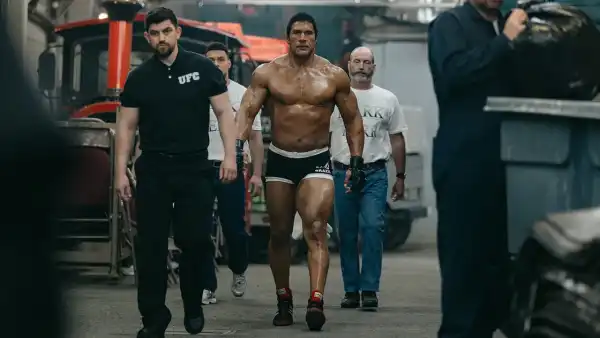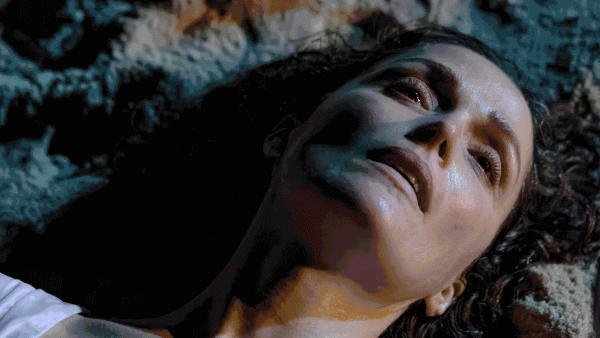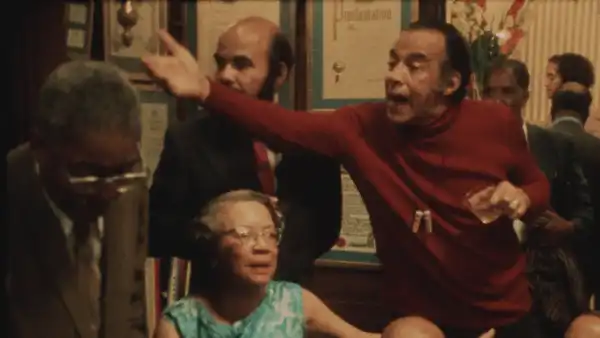
Save this storySave this storySave this storySave this story
There exist only two sorts of substandard performers: those unable to express their own essence, and those whose essence you’d rather avoid. The remainder are likely to flourish under skilled direction, and the majority of actors with unremarkable artistic standing have simply been unlucky with their pairings. Dwayne (the Rock) Johnson has long occupied a prominent spot on my personal roster of performers awaiting their significant role, dating back to his depiction in Michael Bay’s “Pain & Gain,” from 2013. Since that time, Johnson has repeatedly attained commercial triumph without greatly broadening his range; presently, as the lead in “The Smashing Machine,” Benny Safdie’s biographical film concerning the retired mixed-martial-arts celebrity Mark Kerr, Johnson undertakes the essential mission of animating a remarkable figure, by imbuing the character with his own abundant nature—perhaps predictably, considering his origins as a professional grappler. It’s a display of artistry and exactitude, and it lends sentiment to a screenplay that needs it.
“The Smashing Machine,” authored and helmed by Safdie, chronicles Mark (the persona, distinct from Kerr himself) from his inaugural appearance in the Ultimate Fighting Championship, in 1997, to 2000. The era initiates with triumphs and increasing renown—although his attainments are overshadowed and jeopardized by substance dependencies and discord with his partner, Dawn Staples (Emily Blunt)—and diminishes with his culminating loss in a lucrative competition that owes its elevated financial enticement to his prior achievement. Safdie’s methodology toward the narrative is self-divided: as a scribe, he adopts an observational viewpoint, crafting scenes that distinctly epitomize the combatant’s capabilities and tribulations, along with the character attributes contributing to both; however, he films the narrative with informal, documentary-esque segments and broad pageantry, neither of which coincides with the script’s evocative precision.
That’s where Johnson’s depiction plays a role. Ironically, his rendition gains potency from the constrained emphasis of Safdie’s composition, which allows him to expand upon the particular attribute, sentiment, or drive that each scene represents, integrating them like fragments in a design to construct Mark’s identity. The most compelling of these traits is presented early, during a journalist’s interview with Mark following his initial victory. As Mark explains his tactics, his contemplations swiftly transcend the specifics of the activity, assuming a philosophical quality. He commences with the straightforward aspect: his requirement to “genuinely impose” himself on his adversary. Subsequently, he interprets victory in psychological terms, asserting, “I’m going to physically project my will onto” the individual in the ring who possesses the boldness to challenge him: “You genuinely perceive when that transpires, when the person simply relinquishes and utterly dissipates within your grip.” He delineates inflicting discomfort in graphic particulars, and, as if detecting the ramifications of his own musings, suggests that everything “felt very evolutionary,” a remarkably indirect descriptor for deeds and emotions that he acknowledges as primal and untamed.
Safdie’s rendering of these remarks underscores Mark’s comprehension of the profound aspects, and the profoundly unsettling aspects, of mixed martial arts, and perhaps all fighting disciplines—the channeling and professionalization of brutality. The segment establishes the atmosphere for the entirety of the motion picture, but it represents a zenith that Safdie struggles to maintain. He presents a rational film concerning an irrational subject, an exterior film concerning a narrative of subjective intensities. Safdie is evidently intrigued by the fighter’s mentality, but he doesn’t convincingly dramatize the extremity of Mark’s ordeals—except in an inverted manner, by means of his complication fitting into the standards of a noncombatant existence.
Mark cohabitates with Dawn in unremarkable ease in suburban Phoenix, yet there exists nothing unremarkable regarding his source of income, and the preconditions that this imposes on his daily life exert considerable strain on the couple’s bond; Dawn regards Mark’s athletic pursuit as a profession, whereas, for him, it represents a comprehensive way of existing. He declares, prior to another encounter, that, to prosper, he must maintain “one-hundred-per-cent concentration” or else his “emotions will be careening everywhere,” and certain of the motion picture’s most memorable instances—and certain of Johnson’s most noteworthy acting—involve Mark’s unwavering focus when circumstances are spiraling beyond control. His domestic sphere necessitates established protocols, encompassing precise nutritional stipulations, and when Dawn misidentifies the components of his morning beverage (low-fat milk instead of whole, half a banana instead of one and a half bananas), he doesn’t outburst or even critique, but calmly discards it and prepares another. His eerie tranquility appears to exasperate Dawn even more so than a candidly emotive altercation would have done.
Dawn (a regrettably underdeveloped character whom Blunt manifests with sheer acting prowess) is committed and empathetic but disconnected from the absolute, quasi-ascetic character of Mark’s athletic avocation. (The screenplay never elucidates whether their bond had differed prior to his fighting commencement.) She accompanies him to the gymnasium and assists with his stretching, but her inability to penetrate the solitude at the core of his pursuit propels her to a rash choice that proves consequential. It culminates in the motion picture’s finest dramatic segment, one that emphasizes Safdie’s rational strengths. When Mark is situated in Japan to initiate his participation on a mixed-martial-arts platform termed Pride, Dawn journeys there and surprises him, appearing in his changing area at precisely the inopportune instant, just as he’s preparing to enter the arena for a contest. He scarcely recognizes her presence, placing himself into a firmly regulated state of pressurized fierceness so intensely centered and isolated, detached from all other concerns and musings, that she inquires whether he’s intoxicated. (In pressing him for consideration, she merely disrupts his trance and, as the motion picture emphasizes, bears partial accountability for his unfavorable results.) Johnson’s portrayal here transcends in its simplicity; accomplishing as little as feasible by means of willpower, showcasing an intense aloofness and an active composure, he strikingly evokes an athlete’s competitive self-transcendence.
Johnson emanates a supernatural sense of self-command throughout, bestowing Mark with a serenity that appears bound together with internal ligaments of steel that, should one of them falter even minimally, would unleash the infernal furies that he endeavors to reserve for the arena. Back at his dwelling in Phoenix, when the couple’s bond reaches a precipice, Mark proffers a brief but unsettling glimpse of the violence he’s containing when not engaged in combat. However, this merely represents a component in a construction; Mark’s traits become emblematic rather than fully realized. His self-regulation isn’t merely a product of psychological maneuvers but also pharmacological assistance. Along with the infliction of discomfort, the activity entails the endurance of discomfort; to persevere, he becomes reliant on opioids, and, subsequent to an overdose, enters rehabilitation. Yet the motion picture showcases no internal conflict, no self-assessment, but, rather, an unconcerned and rational capability to discard his provisions into a receptacle and proceed onward.
The motion picture provides so scantily of the couple’s existence, so scantily of their shared inclinations, of their notions and their observations and their commonplace discourse, that what is revealed manifests as mere dramatic expediency. The connections that Mark establishes during his profession are similarly streamlined—principally, his cordial camaraderie with Mark Coleman (Ryan Bader), who initially serves as his mentor and subsequently, participating on the platform himself, as a rival. This alteration in function seems to elicit no ramifications whatsoever in the two Marks’ kinship. Publicly, Mark Kerr expresses amiably concerning his mentor turned competitor and even invites him along for a boisterous unplanned meet-and-greet, but the deficiency of friction comes across less as a signal of his composure than of Safdie’s inattention to examining a companionship beyond lighthearted-comedy profundity. Mark’s affiliation with another mentor, Bas Rutten (portrayed by the authentic retired wrestler and presenter Bas Rutten), is similarly cursory.
Regarding the activity itself, Safdie depicts it competently but neutrally. The combat sequences display simple inquisitiveness concerning the activity but no fervor for it or discernment into its internal aspects. They’re educational but unemotional, deficient in a perception of reverence or alarm or any other intense occurrence; they simply log the tactics, specifics, and outcomes, without even analytical captivation. “The Smashing Machine” doesn’t ponder the nuances of mixed martial arts, such as its variations from Olympic-style wrestling (where Kerr initiated) or from the tightly structured, quasi-balletic methods of boxing. A fleeting utterance, in which an elderly woman identifies Mark’s pursuit as one that was threatened with legal interdiction, proposes both its controversy and its distinctiveness, but the subject is dropped as casually as it’s alluded to. Safdie adopts a narrative of ardor and outrage, of fury and affliction, and diminishes it to the reserved method of the intriguing. Only Johnson’s dedicated, precise, and dynamic depiction suggests the impetus that intrinsically courses through the narrative and that the motion picture leaves nearly untapped. ♦
Sourse: newyorker.com






